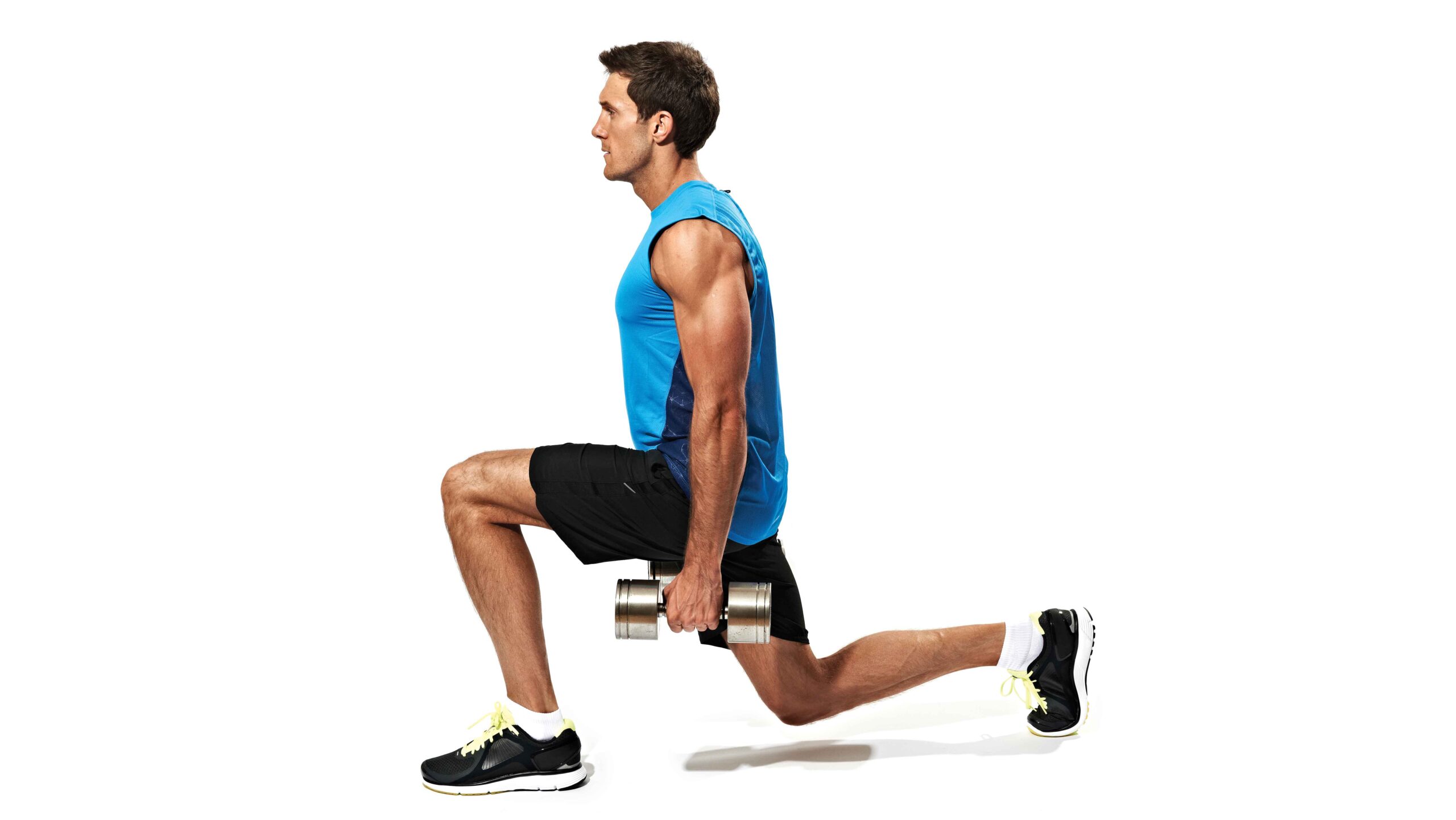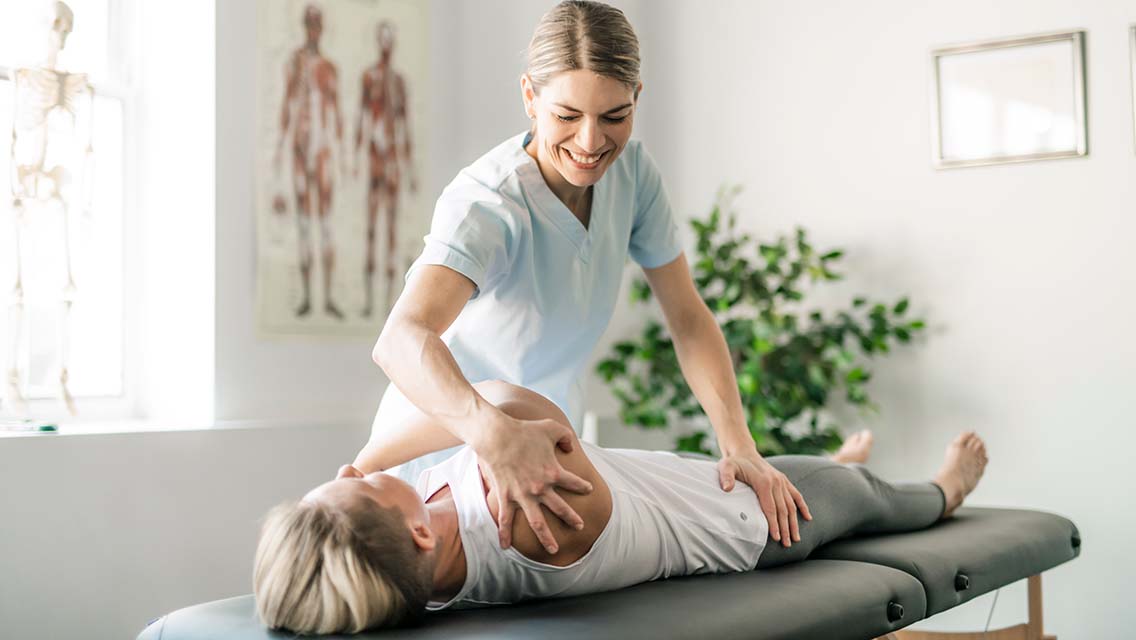Q1: If I begin lifting weights, will I become less flexible?
A. Short answer? Nope. “As long as you’re moving your joints and muscles in their full ranges of motion when you lift weights, you’ll maintain your current level of flexibility,” says James Whitehead, EdD, associate professor of exercise physiology at the University of North Dakota.
Take squats, for example: If you squat deeply, you’ll stay flexible in your quads and hips. If you do shallow, partial reps, on the other hand, you may eventually inhibit flexibility simply because you aren’t moving your body in the way it’s capable of moving.
Whitehead’s research indicates that you can actually improve your flexibility through weight training. Simply perform the exercises in such a way that a passive stretch occurs at the end range of motion. For example, pause at the bottom of a lunge position to improve hip extension on the leg that’s back, or grip the barbell in a way that stretches your forearms and shoulders when doing a behind-the-neck overhead press. The only caveat is that you might need to lighten your load, because you’re taking the stretch-shortening “bounce” effect out of the equation when you add a pause. “Conceptually, this idea is similar to proprioceptive neuromuscular facilitation, or PNF stretching,” says Whitehead, “which is generally acknowledged to be the most effective type of stretching.”
For more on the PNF method, go to ELmag.com/smartstretch.
Q2: Will drinking even a little alcohol derail my efforts in the gym?
A. The answer is a bit hazy, and that’s not the booze talking. “Based on the available research, the body’s response to alcohol ingestion is definitely dose-dependent,” says Layne Norton, nutritional sciences PhD, natural professional bodybuilder and founder of BioLayne.com. “While higher levels of alcohol intake (three to four drinks for an average-size male) can reduce insulin sensitivity and glucose tolerance — both of which negatively affect fat loss — a small amount (about one drink) can even enhance insulin sensitivity.” This may explain, at least in part, why epidemiological studies have demonstrated that women who regularly drink small amounts of alcohol are leaner than those who do not drink at all, despite a higher caloric intake.
Before you fill ’er up, however, keep in mind this is just a correlation, not necessarily causation. It’s much clearer that consuming large amounts of alcohol inhibits fat burning and is highly associated with obesity and insulin resistance.
“Furthermore, consuming alcohol in large amounts before exercise reduces strength and endurance, while consuming a large amount after exercise impedes recovery and power output in subsequent exercise sessions,” Norton says. “Acute and chronic alcohol ingestion in large amounts also significantly drops testosterone levels, which may negatively impact body composition long-term. Finally, consuming the equivalent of roughly three to four drinks in a sitting may reduce the rate of muscle protein synthesis by up to 50 percent, and may also impede the anabolic response to high-protein meals as well.” Bottom line: Drinking enough to catch a buzz will likely cause a negative impact on your fitness regimen, but a glass here and there shouldn’t hurt.
Q3: Can chiropractic treatments help improve my fitness level?
A. There is reason to believe it can. Chiropractic care was founded on the premise that a properly functioning nervous system is essential to the overall health and function of the body. “Chiropractic adjustments improve spinal biomechanics, range of motion and posture, all of which are essential to a properly functioning nervous system,” says Christopher Erickson, DC, chiropractor at the Life Clinic in Eagan, Minn. “Without optimal function of the nerves exiting the spine, you’re more susceptible to injury and your body has to work harder to respond to your fitness routine.” So basically, a healthy, responsive nervous system means a body more readily able to adapt to the demands placed upon it during exercise.
There’s also the structural piece to consider. “Fitness endeavors can often jar and misalign the spinal column. Impact to the legs, feet, head, shoulders and torso often transfers stress back toward the spine,” says Erickson. “Misalignment of the spine creates nerve interference, which in turn affects organs and tissues throughout the entire body, leading to discomfort, disease, disharmony, weakness and imbalance. When you remove the interference with adjustments, the body can heal itself and perform optimally.”
Research demonstrates an association between chiropractic care and decreased back and neck pain, and less pain means you’re able to be more active, perform better and move more efficiently. Plenty of pro sports teams employ full-time chiropractors to work on athletes, presumably for this reason.





This Post Has 0 Comments